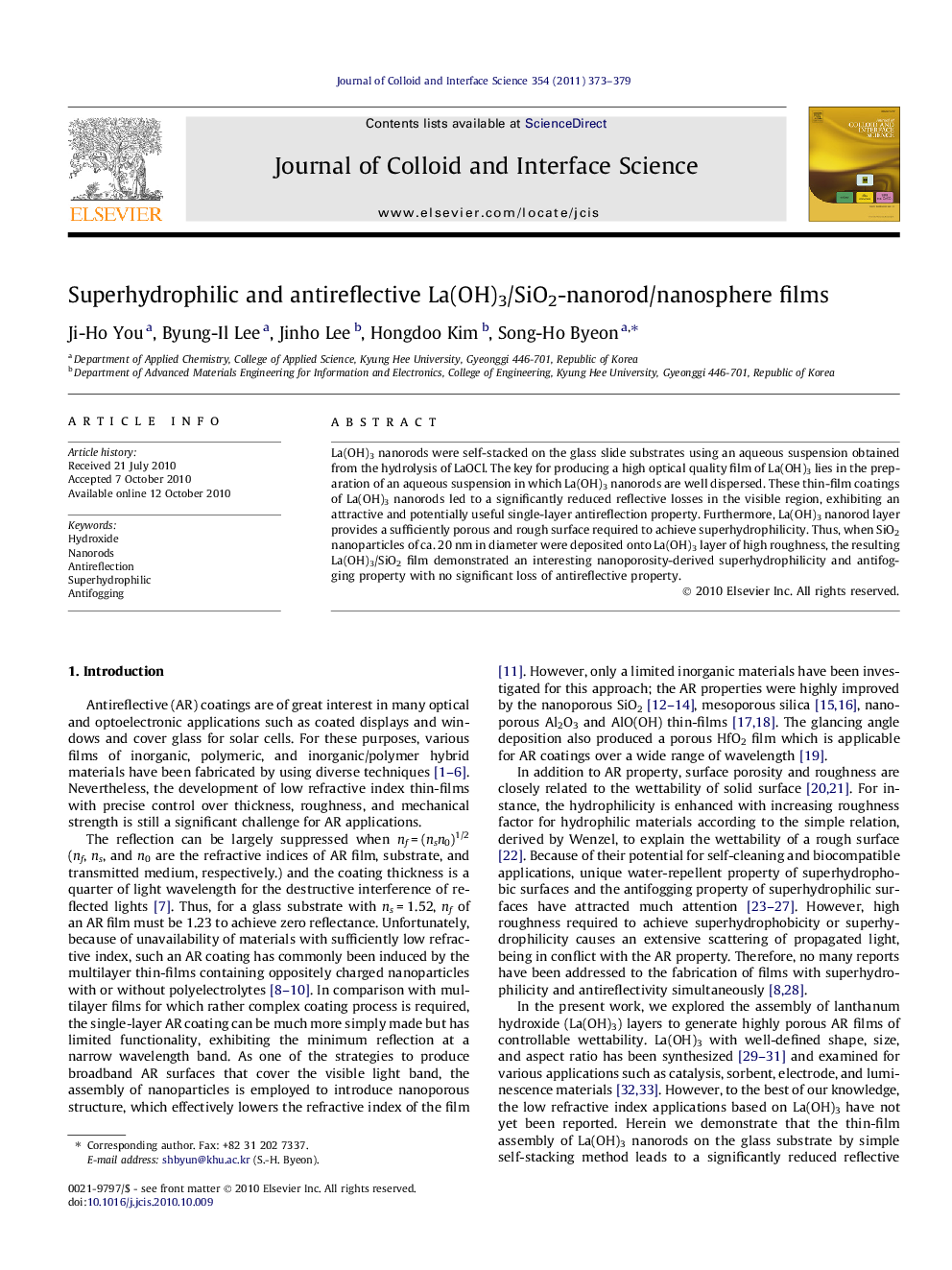| کد مقاله | کد نشریه | سال انتشار | مقاله انگلیسی | نسخه تمام متن |
|---|---|---|---|---|
| 608887 | 880610 | 2011 | 7 صفحه PDF | دانلود رایگان |

La(OH)3 nanorods were self-stacked on the glass slide substrates using an aqueous suspension obtained from the hydrolysis of LaOCl. The key for producing a high optical quality film of La(OH)3 lies in the preparation of an aqueous suspension in which La(OH)3 nanorods are well dispersed. These thin-film coatings of La(OH)3 nanorods led to a significantly reduced reflective losses in the visible region, exhibiting an attractive and potentially useful single-layer antireflection property. Furthermore, La(OH)3 nanorod layer provides a sufficiently porous and rough surface required to achieve superhydrophilicity. Thus, when SiO2 nanoparticles of ca. 20 nm in diameter were deposited onto La(OH)3 layer of high roughness, the resulting La(OH)3/SiO2 film demonstrated an interesting nanoporosity-derived superhydrophilicity and antifogging property with no significant loss of antireflective property.
La(OH)3 nanorods film self-stacked on the glass slide provided highly rough surface for SiO2 nanoparticles layer, the as-assembled La(OH)3/SiO2 film demonstrating superhydrophilicity and antireflectivity simultaneously.Figure optionsDownload high-quality image (121 K)Download as PowerPoint slideResearch highlights
► La(OH)3 nanorods were self-stacked on the glass slide substrates.
► These thin-film coatings of La(OH)3 nanorods exhibit potentially useful single-layer antireflection property.
► La(OH)3 nanorod layer provides a sufficiently rough surface required to achieve superhydrophilicity.
► La(OH)3/SiO2-nanorod/nanosphere film shows superhydrophilicity and antireflectivity simultaneously.
Journal: Journal of Colloid and Interface Science - Volume 354, Issue 1, 1 February 2011, Pages 373–379